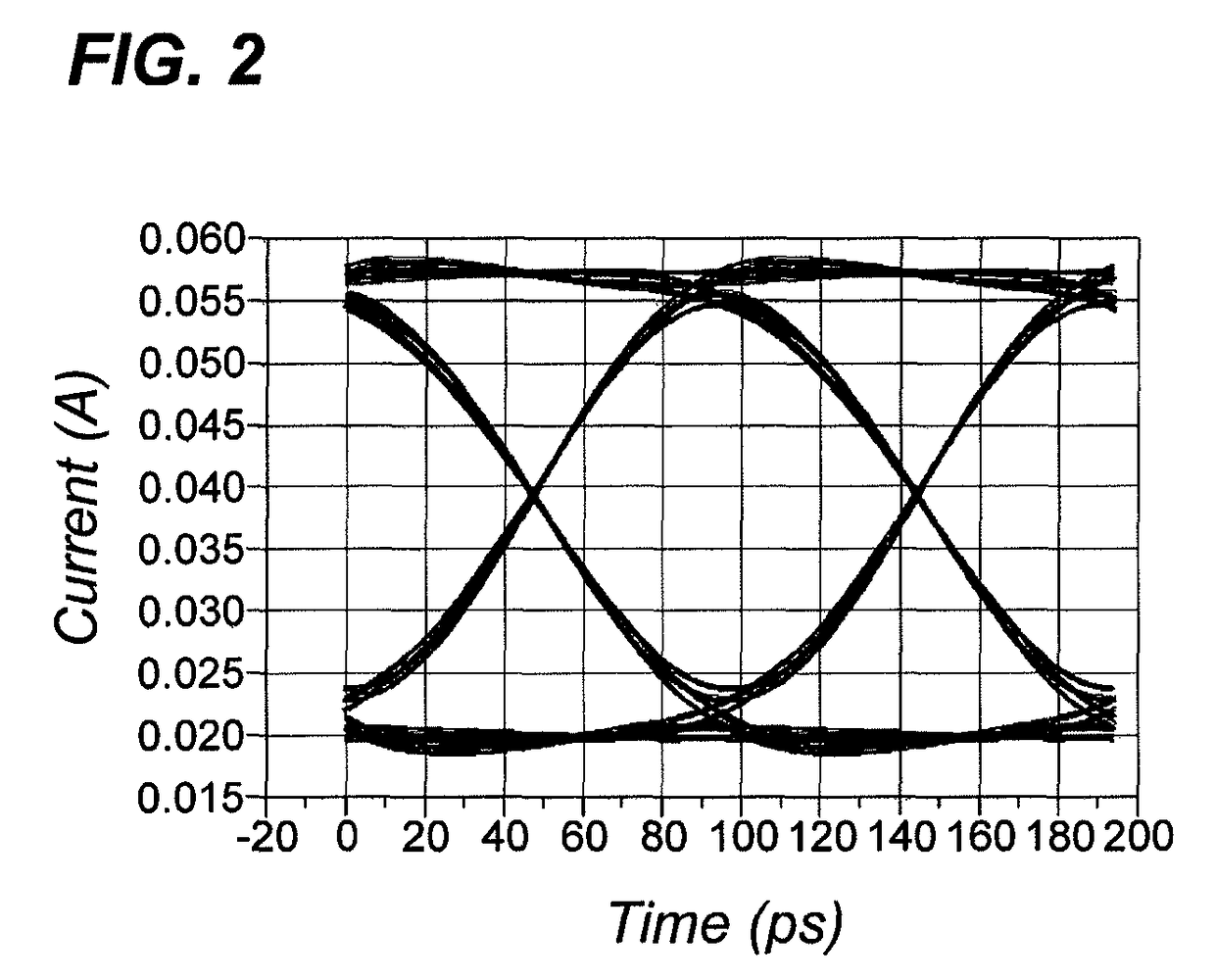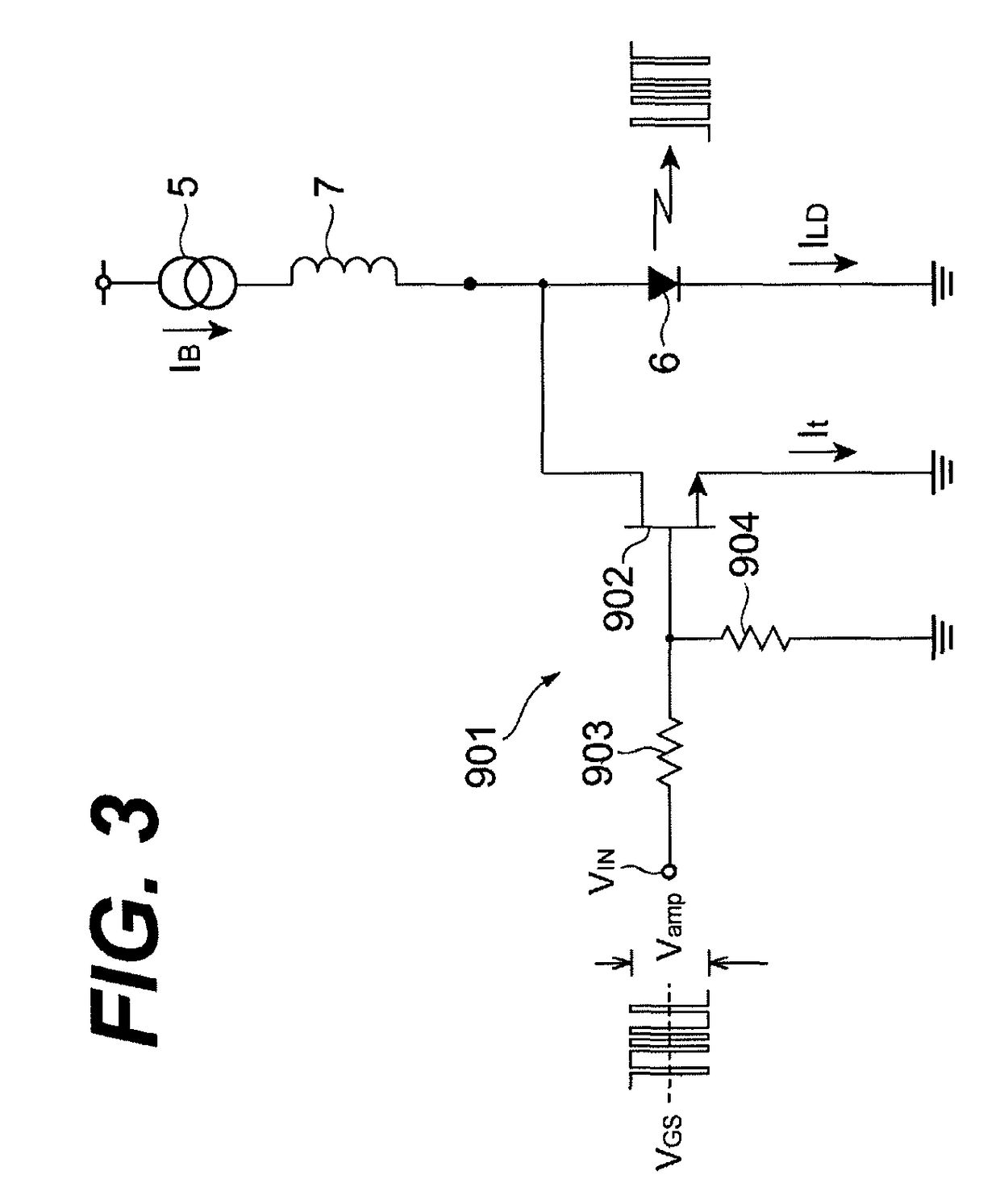Laser diode driver driven in shunt mode by signals complementary to each other
a laser diode and shunt mode technology, applied in the field of laser diodes, can solve the problems of degrading the high frequency response of the terminator, increasing the ineffective power consumption, and increasing the inability to integrate capacitors with larger capacitances in the ic, so as to achieve the effect of high frequency performance of the laser driver
- Summary
- Abstract
- Description
- Claims
- Application Information
AI Technical Summary
Benefits of technology
Problems solved by technology
Method used
Image
Examples
Embodiment Construction
[0015]Next, preferred embodiments according to the present invention will be described. In the explanation of the drawings, the same numerals or symbols will refer to the same elements or the equivalents thereof without overlapping descriptions.
[0016]FIG. 1 shows an exemplary circuit diagram of a laser driver according to an embodiment of the present invention. The laser driver 1 in FIG. 1 includes two FETs 2a and 2b, with the enhancement configuration, a terminator 3, and a capacitor 4, where the laser driver 1 drives a laser diode 6 by shunting a current IB provided from an external current source 5. The laser driver 1 may be driven by a differential circuit 20 connected in the upstream of the laser driver 1. The differential circuit 20, for instance, converts a mono-phase signal provided thereto into signals complementary to each other. One of complementary signals has a normal phase, while, the other of the complementary signals has an opposite phase, thus, the laser driver 1 ma...
PUM
 Login to View More
Login to View More Abstract
Description
Claims
Application Information
 Login to View More
Login to View More - R&D
- Intellectual Property
- Life Sciences
- Materials
- Tech Scout
- Unparalleled Data Quality
- Higher Quality Content
- 60% Fewer Hallucinations
Browse by: Latest US Patents, China's latest patents, Technical Efficacy Thesaurus, Application Domain, Technology Topic, Popular Technical Reports.
© 2025 PatSnap. All rights reserved.Legal|Privacy policy|Modern Slavery Act Transparency Statement|Sitemap|About US| Contact US: help@patsnap.com



